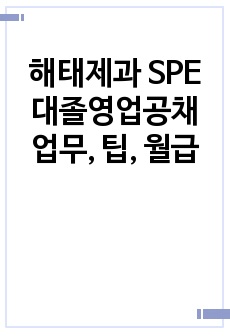소련 공업화와 철도 그리고 노동규율, 1932∼34
* 본 문서는 배포용으로 복사 및 편집이 불가합니다.
서지정보
ㆍ발행기관 : 동국사학회
ㆍ수록지정보 : 동국사학 / 56권
ㆍ저자명 : 趙准培
ㆍ저자명 : 趙准培
목차
Ⅰ. 서론Ⅱ. 1932년 11월 이전의 노동규율
1. 전직 및 결근
2. 철도사고
3. 사법적 조치들: 노선 법정 및 생산 동지 법정
4. 철도노조
5. 항소 및 청원
Ⅲ. 1932년 11월 포고령 이후: 교육 및 문화에서 행정적 강제로
1. 1932년 11월 포고령과 철도노동자
2. 1932년 11월 제3차 철도노조 총회
3. 전직 및 결근
4. 철도사고
5. 사법적 조치들: 생산 동지 법정
6. 항소 및 청원
Ⅳ. 1933년 7월 포고령과 그 이후: 행정적 강제에서 숙청으로
1. 정치부의 도입
2. 당 및 운송 인민위원부
3. 철도노조
4. 결근 및 철도사고
5. 항소 및 청원
Ⅴ. 1934년 철도운송과 노동규율
Ⅵ. 결론
한국어 초록
1932년 11월, 노동규율과 관련한 정부의 포고령이 발표되면서 소련 경제체제의 작업장 내 질서 문제는 새로운 전기를 맞게 되었다. 소비에트
당국은 실업의 종료로 인한 노동력 수요의 팽창과 식량공급 사정의 악화가
초래한 생산현장에서의 대규모 전직과 무단결근 현상을 이전 시기보다 한
층 더 강화된 처벌을 통해 바로잡겠다는 의지를 표명한 것이었다. 당정의
방침은 철도운송 부문에도 어김없이 적용되었고 기존의 노동규율 항목 이
외에도 사고와 같은 철도의 독특성을 지닌 요인들이 추가되었을 뿐만 아니
라 노선 법정이나 생산 동지 법정의 강화와 같은 사법적 측면의 노력도
병행되었다.
노동규율을 개선하려는 과정에서 철도노조는 강경노선을 천명하는 스
탈린 지도부의 입장을 일방적으로 추종하지 않았다. 각종 회의를 통해 교
육과 문화사업의 중요성을 지속적으로 강조했고 청원제도를 활용하여 노
동자들의 이해관계를 옹호했다. 뿐만 아니라 정부의 포고령을 위반한 노동
자들에게 이의를 제기할 수 있는 기회를 제공했으며 항상 성공적인 것은
아니었지만 종종 해직자들을 복권시키기도 했다. 즉 노조는 상급기관들의
방침을 충실하게 따르면서도 다른 한편으로 나름의 독자적인 입장을 제시
하려 노력했던 것이었다.
그러나 11월 포고령의 발표 이후 노조의 온건노선은 점차 퇴색하기 시작했고 1933년 7월 정치부의 도입과 더불어 급격히 약화되었다. 부진을
면치 못하고 있는 철도운송 부문의 현실 앞에서 노동규율 문제에 대해 교
육과 문화를 강조하는 노조의 유연한 해법은 효력을 상실했고 노동자 청원
서의 기각률 또한 높아졌다. 생산 동지 법정의 재편과 같은 사법적 차원의
노력들도 빛이 바랬고 군사적 성격의 조치를 선택한 당정의 한층 더 강력
해진 방침에 노조도 강경노선으로 선회할 수밖에 없었다. 이후 노조의 입
지는 크게 축소되었고 1934년에는 마침내 숙청의 대상으로 전락했다.
하지만 극단적인 조치들이 취해진 이후에도 철도부문의 노동규율 문제
와 운송 상황은 여전히 개선되지 않았다. 사고는 빈발하고 있었고 절도의
문제도 해결되지 못했으며 노동자들은 지속적으로 작업장 내 질서를 위반
하고 있었다. 철도운송 또한 일일 화물 운송량이 정체상태를 벗어나지 못
하는 등 끊임없이 목표에 미달하면서 소련 경제의 발목을 잡았다. 새로운
돌파구는 철도에 막대한 투자를 끌어올 수 있었던 스탈린의 최측근 카가노
비치가 운송 인민위원으로 취임하는 1935년이 되어서야 마련될 수 있었다.
영어 초록
Unlike the traditional concept of labour discipline in existing works,Russian and western alike, a case study of the railway union shows that
this concept was extensively applied to various aspects of railway
transport. Not only absenteeism and labour turnover, but also accidents
were frequently and seriously discussed at the conferences of the
railway union and NKPS, not to mention in the party. The peculiarity
of transport, and of the railways in particular, allowed the Soviet
authorities to include in the category of labour discipline additional
factors to those usually associated with labour discipline in other
branches of the economy.
All these problems, however, grew steadily or sharply in the first
half or the summer of 1932. An immense influx of new workers from
the countryside and worsening of food supply situation encouraged
widespread labour turnover and absenteeism. The drastic cut of
investment in railway transport, due to the priority of the defence
budget after the Japanese invasion of Manchuria in 1931, did not allow
further supplies of new equipment and parts for railways to prevent accidents. Moreover, labour productivity deteriorated in 1932 when the
party moderated its economic performance targets.
In the midst of all this, the notorious November decree was
announced. This was harsher than any other legal measures taken in
previous years. The authorities aimed to reduce or eradicate absenteeism
to secure a stable labour force and raise labour productivity. Over the
subsequent months they achieved remarkable results but failed to
eradicate absenteeism altogether. And accidents still threatened the
normal operation of railway transport.
In implementing a series of governmental decrees for the establishment
of labour discipline, the railway union did not have a unilateral
approach. The union did not abandon efforts to improve labour
discipline through educational and cultural work. In addition, the union
administered the petition system through which a number of workers
discharged for violation of labour discipline were reinstated to their
jobs. In the midst of harsh legal measures, workers could still express
their opinion on and raise objection to the decisions with which they
disagreed. In response, a number of cases were reconsidered and
reversed.
The favourable atmosphere in the union, however, declined after
the announcement of November decree and even more sharply with the
introduction of the July decree in 1933. Efforts were not successful in
improving labour discipline through education and judicial measures,
such as the introduction of production comradely courts. In addition,
railway transport still remained ‘a bottleneck’ in the Soviet economy. Thus, the soft line of the union towards labour discipline was losing
support and it began to lean more toward the hard line, though
somewhat reluctantly. In the midst of this, the party chose extreme
methods in the summer of 1933.
참고 자료
없음태그
"동국사학"의 다른 논문
 高句麗의 滅亡과 安東都護府24페이지
高句麗의 滅亡과 安東都護府24페이지 韓國史에서 中世의 起点으로서 科擧制 施行18페이지
韓國史에서 中世의 起点으로서 科擧制 施行18페이지 혁신주의시대 자유주의의 성격34페이지
혁신주의시대 자유주의의 성격34페이지 16세기 지중해 교역의 쇠퇴와 대서양의 흥기에 대한 반론 제기42페이지
16세기 지중해 교역의 쇠퇴와 대서양의 흥기에 대한 반론 제기42페이지 예수의 출생에 대한 고찰37페이지
예수의 출생에 대한 고찰37페이지 明 萬曆年間 湖廣?稅太監 陳奉과 民變44페이지
明 萬曆年間 湖廣?稅太監 陳奉과 民變44페이지 壬亂 이후 鑄錢論과 倭錢의 수입32페이지
壬亂 이후 鑄錢論과 倭錢의 수입32페이지 조선전기 ⌈蒙山和尙六道普說⌋ 간행의 배경과 의미37페이지
조선전기 ⌈蒙山和尙六道普說⌋ 간행의 배경과 의미37페이지 義寂과 新羅의 唯識思想27페이지
義寂과 新羅의 唯識思想27페이지 身延文庫藏 ⌈無量壽經述記⌈와 義寂의 사상 경향28페이지
身延文庫藏 ⌈無量壽經述記⌈와 義寂의 사상 경향28페이지

























